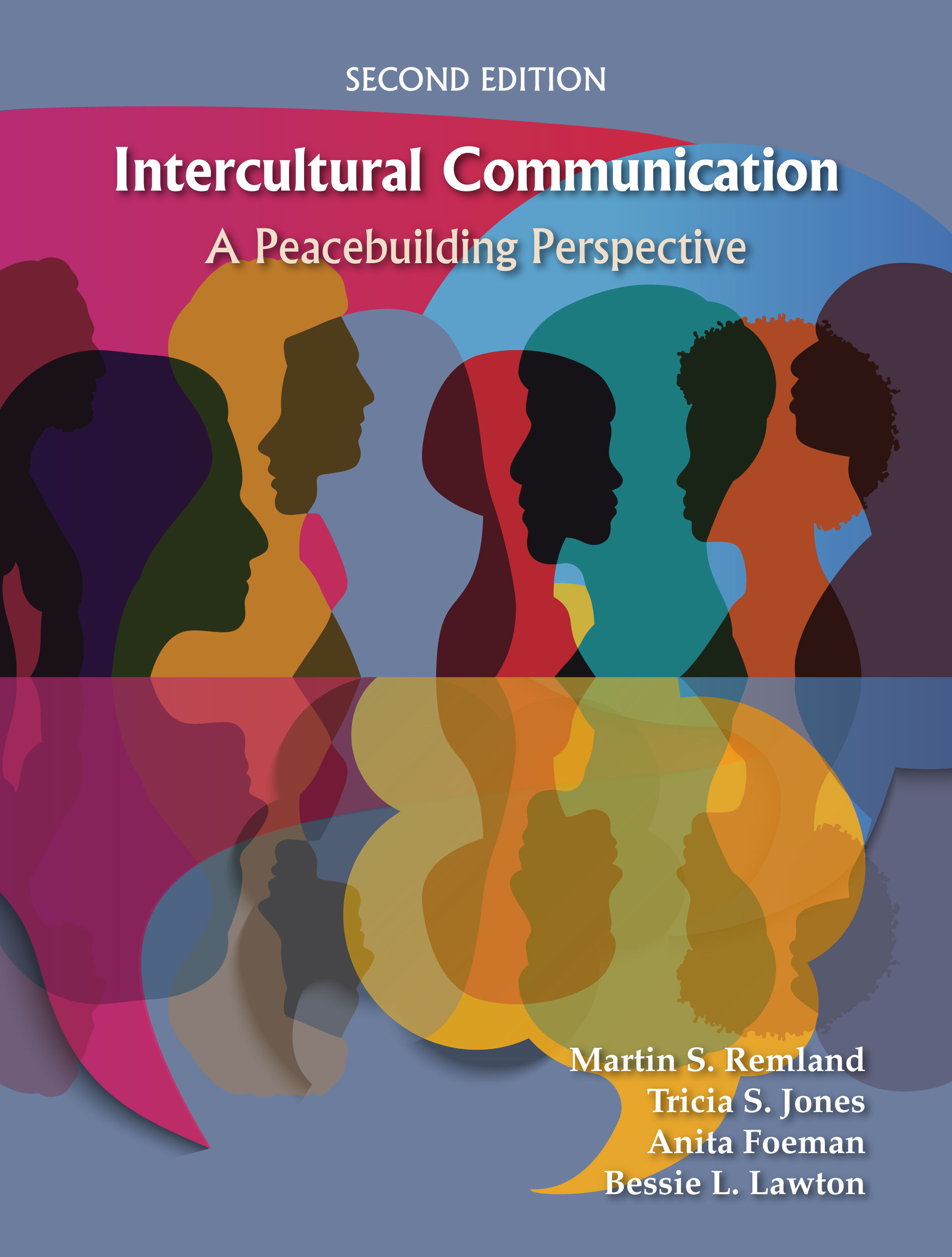“I am definitely using this text. Important topics, questions for discussion, and excellent instructor’s resources.” — Maria Cuevas, Yakima Valley Community College
“While covering similar topics as other texts on the subject, Remland et al. cover these concepts in a more meaningful way with a learner-centric format and relevant examples. I was especially drawn to the peacebuilding perspective, which is cleverly worked into themes by illustrating our common humanity yet cultural uniqueness.” — Erin Saxon, Endicott College
“The central premise of peacebuilding is a reflective way to make intercultural concepts real—having a goal like this in mind while reading helps to solidify not only the ‘what’ of culture but also the ‘why.’” — Bruce Kuiper, Dordt College
“We adopted it because of the peacebuilding focus and because it so intelligently applies the curriculum to contexts of diversity rather than largely ignoring that context as so many intercultural communication texts do.” — Martha Bienert, GateWay Community College

429 pages, $64.95 list
1-4786-4937-2
978-1-4786-4937-3
© 2024
paperback
Instructor's resource materials available here
To obtain a username and password to access these materials, contact comps@waveland.com.
To obtain a username and password to access these materials, contact comps@waveland.com.
eBook availability
Intercultural Communication
A Peacebuilding Perspective
Second Edition
In our increasingly globalized world, bridging cultural gaps and connecting with people from diverse backgrounds is essential. Students have more opportunities than ever to immerse themselves in foreign settings, and it is important to learn positive approaches to take part in these experiences. This new edition of Intercultural Communication engages readers interested in developing intercultural competence, with the goal of fostering diverse and vibrant communities that coexist peacefully.
The authors start by establishing the foundation of competent communication and its integral role in contributing to peaceful communities. From there, they delve into how cultural differences relate to the impacts of cultural frames and emotions, as well as nonverbal and verbal communication. In the latter half of the book, the text comprehensively surveys how culture permeates and influences our lives. It explores how culture shapes the dynamics of our friendships, family relationships, classroom and workplace environments, media perceptions, and experiences when visiting cultures different from our own. By understanding the profound effects of these cultural influences, readers are better equipped to fully immerse themselves in different ways of life. Each chapter also provides a collection of boxed examples that deliver both engaging insights and entertaining anecdotes, offering ample content for stimulating discussions.
The authors start by establishing the foundation of competent communication and its integral role in contributing to peaceful communities. From there, they delve into how cultural differences relate to the impacts of cultural frames and emotions, as well as nonverbal and verbal communication. In the latter half of the book, the text comprehensively surveys how culture permeates and influences our lives. It explores how culture shapes the dynamics of our friendships, family relationships, classroom and workplace environments, media perceptions, and experiences when visiting cultures different from our own. By understanding the profound effects of these cultural influences, readers are better equipped to fully immerse themselves in different ways of life. Each chapter also provides a collection of boxed examples that deliver both engaging insights and entertaining anecdotes, offering ample content for stimulating discussions.
Reactions
Part 1: INTERCULTURAL COMMUNICATION AND PEACEBUILDING
1. Intercultural Communication in the Global Community
2. A Peacebuilding View of Intercultural Communication
Part 2: ELEMENTS OF INTERCULTURAL COMMUNICATION
3. Cultural Identity
4. Cultural Frames of Reference
5. Culture and Emotion
6. Culture and Nonverbal Communication
7. Culture and Verbal Communication
Part 3: CONTEXTS OF INTERCULTURAL COMMUNICATION
8. Intercultural Communication and Friendship
9. Intercultural Communication in the Family
10. Intercultural Communication in the Classroom
11. Intercultural Communication in the Workplace
12. Intercultural Communication and Media
13. Intercultural Communication and the Sojourn Experience
1. Intercultural Communication in the Global Community
2. A Peacebuilding View of Intercultural Communication
Part 2: ELEMENTS OF INTERCULTURAL COMMUNICATION
3. Cultural Identity
4. Cultural Frames of Reference
5. Culture and Emotion
6. Culture and Nonverbal Communication
7. Culture and Verbal Communication
Part 3: CONTEXTS OF INTERCULTURAL COMMUNICATION
8. Intercultural Communication and Friendship
9. Intercultural Communication in the Family
10. Intercultural Communication in the Classroom
11. Intercultural Communication in the Workplace
12. Intercultural Communication and Media
13. Intercultural Communication and the Sojourn Experience